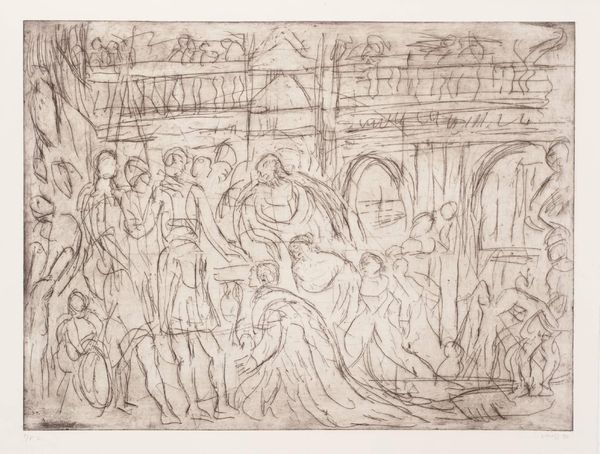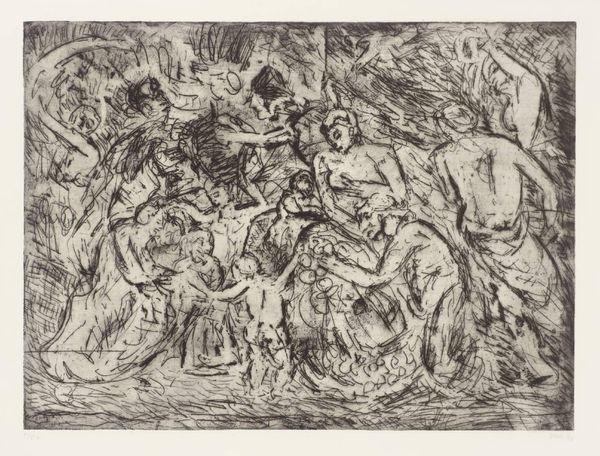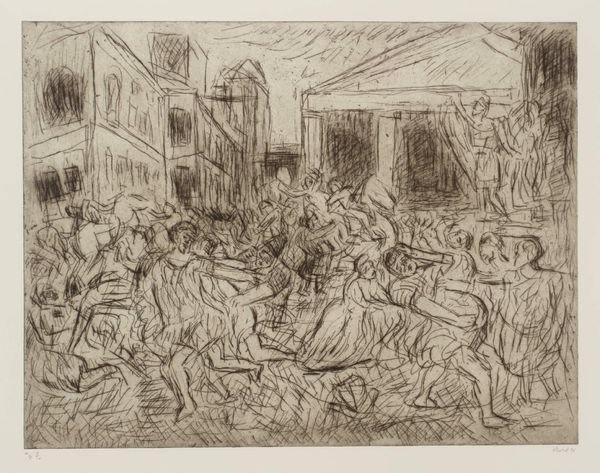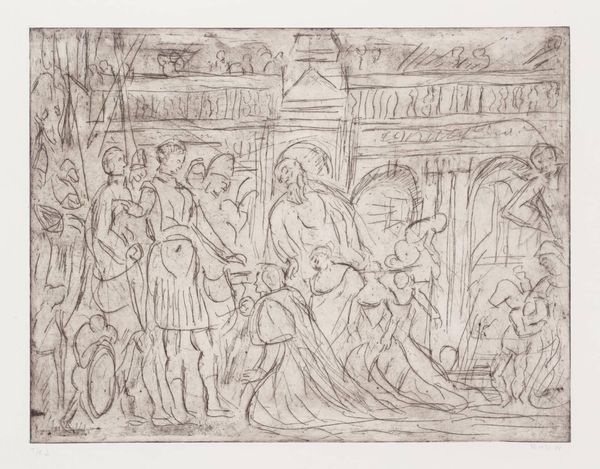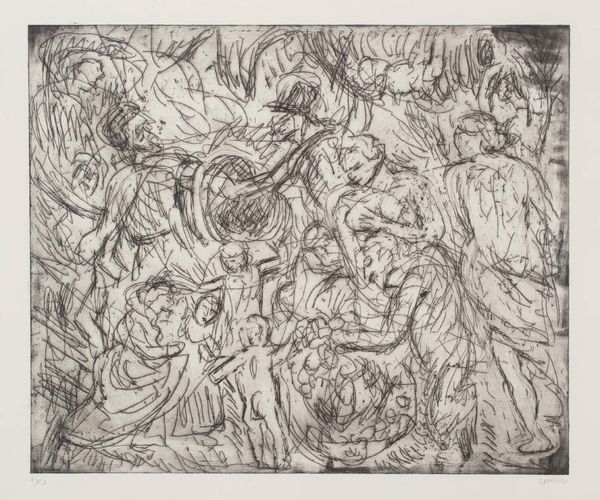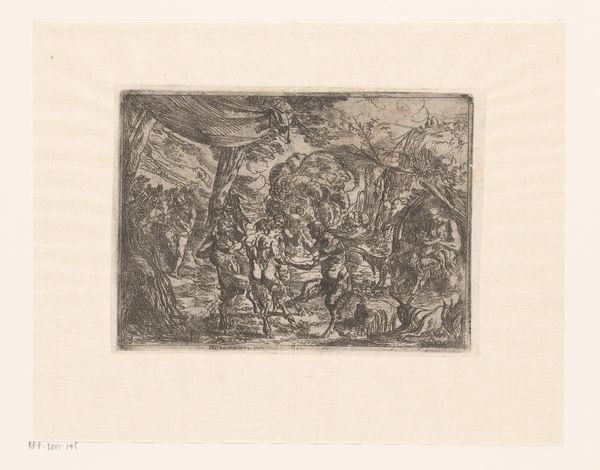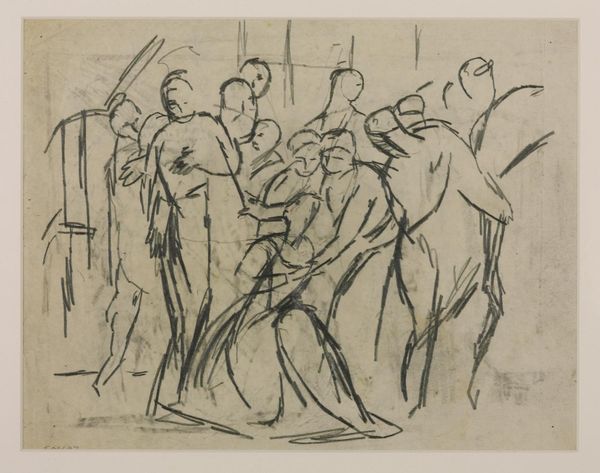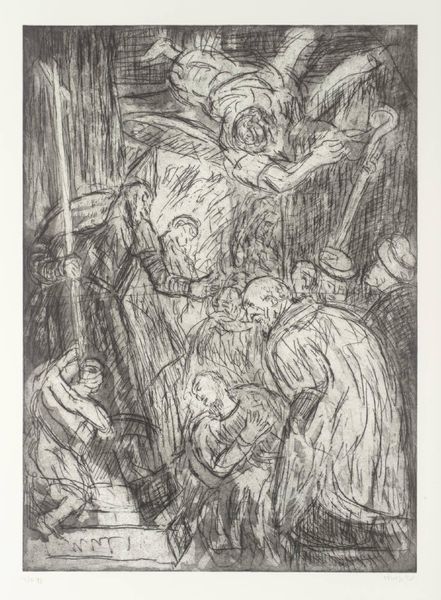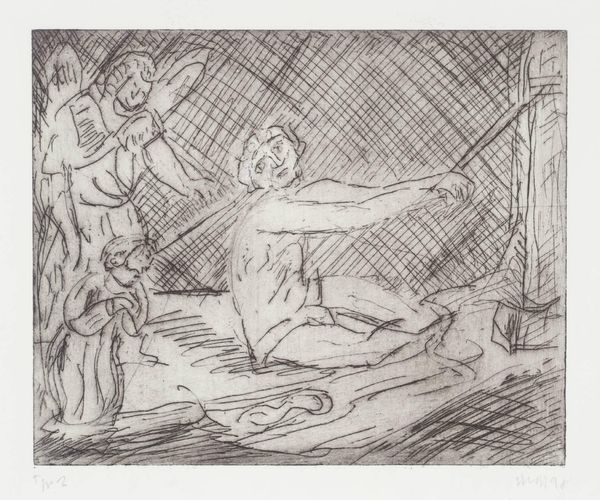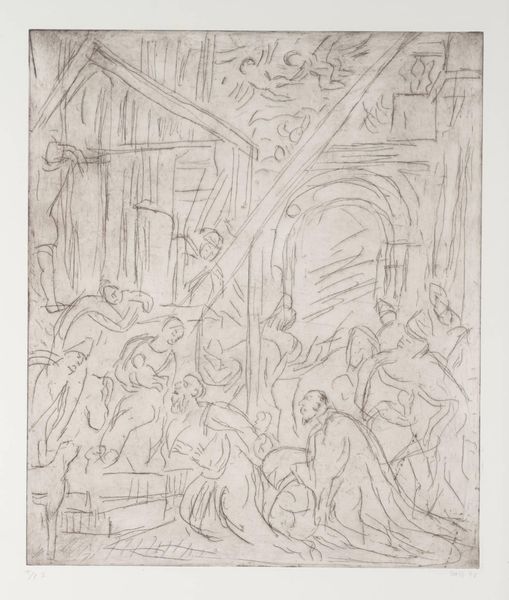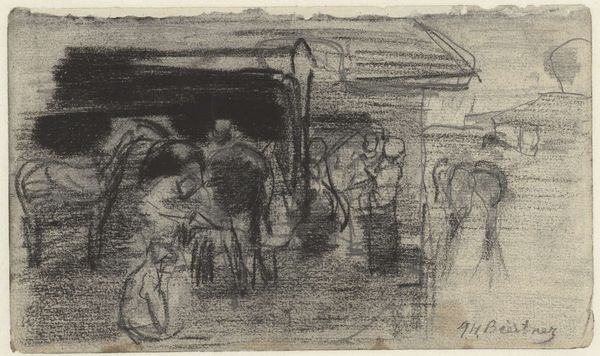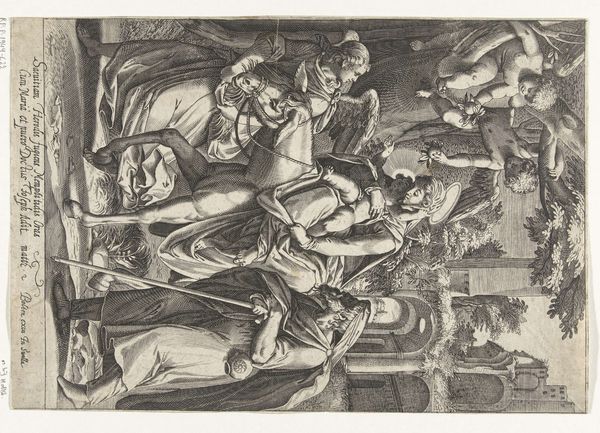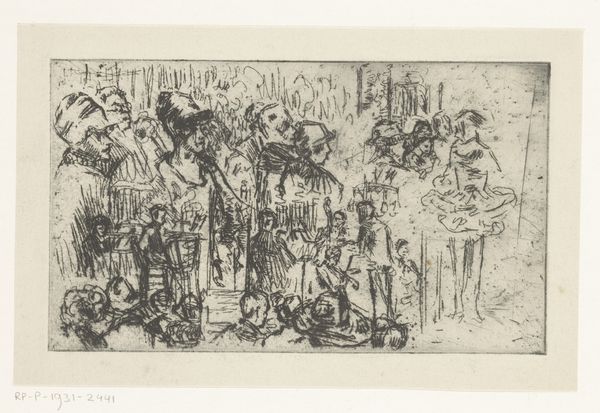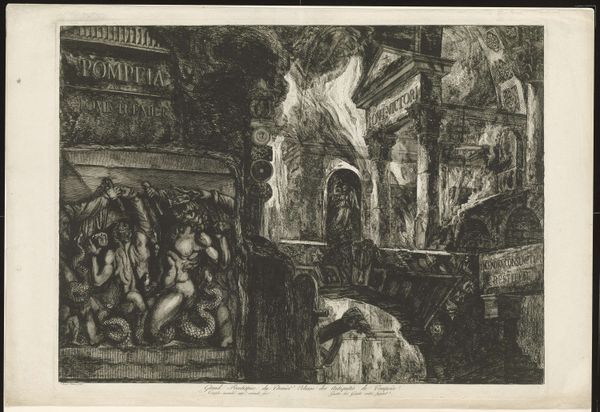
Copyright: © Leon Kossoff | CC-BY-NC-ND 4.0 DEED, Photo: Tate
Curator: Leon Kossoff, born in 1926, made this work, "The Family of Darius before Alexander (3) (from Veronese)." It’s part of the Tate Collection. Editor: At first glance, it seems to convey turmoil, almost like a theater scene caught mid-explosion. The rapid lines add urgency and disorder. Curator: Yes, Kossoff reinterprets Veronese's scene, imbuing it with modern psychological tension. The original subject, a story of mistaken identity and forgiveness, is here rendered as raw emotion. Editor: The sketchy lines and almost claustrophobic composition create a sense of historical trauma, of revisiting power dynamics where identity and family are subjugated by imperial force. Curator: The visual language speaks of history's weight on the present, where these archetypes of power and submission are eternally replayed in our cultural consciousness. Editor: I think it reminds us that history isn’t just something that has happened, it continues to be actively remade. Curator: It makes you wonder about the enduring power of certain visual narratives to speak to our own time. Editor: Absolutely, this piece is not just looking back; it's challenging us to look forward and consider whose stories we’re continuing to tell.
Comments
tate 6 months ago
⋮
http://www.tate.org.uk/art/artworks/kossoff-the-family-of-darius-before-alexander-3-from-veronese-p11717
Join the conversation
Join millions of artists and users on Artera today and experience the ultimate creative platform.
tate 6 months ago
⋮
This print is one of many etchings executed by Leon Kossoff in response to, and literally in the presence of, oil paintings by old masters; in this case The Family of Darius before Alexander, 1565-70, by Paulo Veronese (c.1528-88), owned by the National Gallery, London. Tate owns three prints by Kossoff after this Veronese painting (Tate P11715-17). The artist’s ability to explore a number of separate responses while making drawings and prints from a single subject is illustrated in these etchings. This version is printed in black ink on white paper. This print was never published as an edition; Tate owns the eighth of fifteen trial proofs.
